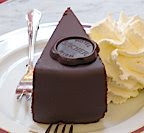 MUSE: Exploring the World's Museums
MUSE: Exploring the World's Museums MUSE is part of my collection of magazines that are long gone and out-of-print. The cover of the Premier Issue of MUSE featured a haunting bronze portrait of Tiberius Claudius Nero Caesar. According to the notes about the cover, the portrait composed of metal fragments was acquired in 1902 by Henry Walters, son of the founder of Baltimore's Walters Art Gallery. In 2000, the Walters Art Gallery changed its name to the Walters Art Museum to reflect its image as a large public institution. The following year, the museum reopened its largest building after a dramatic three-year renovation.
Thirty years after the defunct Museum Magazine was published by McGraw-Hill (1979), I tried unsuccessfully to find the original cover art at the Walters Museum website. There is a similar head composed of fewer pieces but not the subject of the cover photo. The bronze portrait bust like the magazine has disappeared.
THE EDITOR
Otto Fuerbringer was the Editor of this one-and-only issue of MUSE. According to the New York Times obituary (7/30/2008), "He (had been) a hard-driving, conservative-leaning managing editor of Time magazine during the political and social upheavals of the 1960s" and "brought a vibrancy, and a degree of controversy, to what had long been a rather taut, tartly written publication". Fuerbringer was noted for "Time’s lead story on April 8, 1966, (it) had no portrait on the cover, just a bold-red headline on a black background that asked, “Is God Dead?...The article set off a backlash by religious conservatives."
In the Editor's letter for MUSE, Fuerbringer said, " Museums are a part of almost everyone's experience. Museum-going is learning and enjoyment, intellectual refreshment and emotional release. It stirs curiosity and enlarges one's vision."
"By founding Muse magazine we hope to keep enlarging the museum experience. We will convey the excitement of current shows and the richness of permanent treasures. we will describe, judge and (when justified) exclaim! The world's museums are our province, and we will help our readers discover them."






I am wondering why MUSE failed after just one issue. Blaine, give a more explicit answer.
ReplyDeleteMy guess is that "Muse" was a prototype issue developed from a publishing think-tank to make money from a market segment that never developed. The East-Wing of the National Art Gallery had just opened; the Air and Space Museum was a major crowd draw so McGraw-Hill cobbled together a new magazine devoted to museums. It included a pre-publication charter subscription offer reply card (12 big issues for just $15). "Muse" contained lots of full page ads from Pan-Am, Japan Airlines,Toyota, Jeep etc. The Premier Issue probably went to Ad Agencies and potential advertisers. Then it disappeared. There are other very good museum publications but nobody ever again attempted to cover the World's Museums like "Muse".
ReplyDeleteI hope those pre-publication subscribers got their money back. It would have been a nice class action lawsuit, unless there was bankruptcy!
ReplyDeleteYou have forgotten Ramparts magazine, the all-time leftist flop. See this Wickipedia description: http://en.wikipedia.org/wiki/Ramparts_(magazine)
ReplyDeleteBlaine, do you remember "Audience" from the early '70s? I think it only lasted for two years, but to an isolated 2nd lieutenant, it was like being invited to a social/literary salon.
ReplyDeleteOn an unrelated note, did the observe how the photos for the New York Times' recent "100 Simple Salads" looked just like your old Marzetti ads?